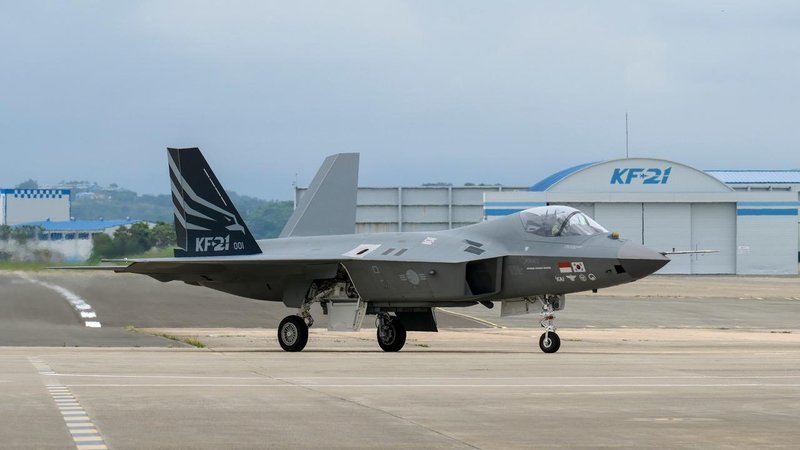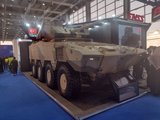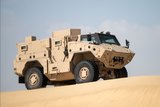Will air forces in the Middle East look to new sources for advanced equipment?
GCC nations such as Bahrain have traditionally turned to Europe and the US for supplies of combat aircraft. (Photo: US Air Force)
Gulf Cooperation Council (GCC) states have often used the offerings of new air, sea and land systems from outside of the region to maintain international friendships and trade relations. In the aviation sector, the polyglot forces of Saudi Arabia, Qatar and the UAE are an example of this political hedge-betting, ensuring no single supplier has control over their military capability.
This is particularly true at the most advanced end, where exported platforms such as combat aircraft are usually downgraded to some degree.
Traditionally it has been US and European companies that have competed for these prizes, but this may be starting to change. Several new providers have arrived on the stage and are seeking to build their own bridgeheads in the region.
Related Articles
US says F-35 and MQ-9 sale to UAE still ‘on the table’
France enters talks with Saudi Arabia for potential sale of 54 Rafale fighter jets
Dubai Airshow 2023: UAE firm and ELT Group outline plans on Emirati EW logistic support
Until February 2022, Russia was making determined steps to regain some of the market share but the political landscape – particularly its support of Syria and Iran – meant that it was always unlikely to achieve much.
Following its invasion of Ukraine even previous customers are likely to have reservations. The ability of Russian industry to supply high-end products has also been severely compromised.
With the absence of a previously strong competitor, the way is open for newer providers. Turkey has made no secret of its objective of becoming a major defence supplier, while South Korea’s KAI has been quietly building a strong customer base with the T-50 attack/trainer jet series and its Surion medium-weight helicopter is also offered.
More interestingly, the uncertain contribution of Indonesia to the KF-21 fifth-generation fighter programme opens the door for other partners. Such participation would be of definite interest to the more industrially advanced states in the region.
India has also been active and is keen to achieve exports of its own indigenous products. Meanwhile Japan’s transport and maritime patrol aircraft are likely of interest, and the same is true of Embraer’s C-390.

Fifth-generation fighters from South Korea and Turkey could prove attractive to air forces in the Middle East. (Photo: Republic of Korea DAPA)
The elephant in the room, however, is China. With lines clearly drawn between the US and the CCP, the politically tempered procurement approach would be tested should one of the GCC countries procure an armed Chinese product.
The joint (with Pakistan) JF-17 fighter aircraft is an obvious item for export and might be accepted by Washington. But should China – with its more relaxed attitude to defence exports – begin to provide advanced UAVs or missile defence systems, US allies may find themselves in a position similar to Turkey and its S-400 saga.
The strategic importance of the region means that US and European governments will not simply accept a new political player crowding them out. But with many local politicians wishing to keep relatively neutral relations between the major world powers, growing Chinese or Indian imports is a strong possibility.
So far France (and especially the Rafale) has been the major beneficiary of US limits on certain technology sales, plus Russia’s pariah status and the desire for a mixed supplier base. But its selling point as ‘not America’ seems likely to be challenged by other states that can also advertise more flexible export positions. This may be particularly relevant if collaboration continues with the far more conservative Germany.
The desire to develop local industry is also likely to be a significant determinant of future advanced suppliers. The importance of intellectual property rights and domestic input have been climbing over the last decades and this is only likely to increase further.
Becoming a valued partner for an advanced programme would be a definite coup for states traditionally seen merely as purchasers. Transport aircraft, UAVs or light combat aircraft are an obvious starting point, and there are several examples of each on offer.
In the short term, strong involvement with programmes is relatively unlikely for many countries in the region. But the examples of Turkey or South Korea, where component supply became assembly, then local modification and finally indigenous products, are compelling.
If the US is unwilling to provide such a path, there are likely several alternative exporters more inclined to offer such a prize.
More from World Defense Show 2024 | View all news
-
![World Defense Show 2024: Maxar on course to have six observation satellites in orbit this year]()
World Defense Show 2024: Maxar on course to have six observation satellites in orbit this year
WorldView Legion, a fleet of high-performance satellites, will expand Maxar’s ability to revisit the most rapidly changing areas on Earth to better inform critical, time-sensitive decisions.
-
![World Defense Show 2024: The show’s second iteration adapts to a changing world]()
World Defense Show 2024: The show’s second iteration adapts to a changing world
Saudi Arabia’s welcomed the return of the World Defense Show with the event’s heavy focus on vehicles and CUS systems reflecting ongoing conflicts and the priorities of many national programmes.
-
![World Defense Show 2024: Advanced Protection Systems unveils new CUAS jamming system]()
World Defense Show 2024: Advanced Protection Systems unveils new CUAS jamming system
Advanced Protection Systems (APS) has history in the radar and CUAS areas with systems in service in Ukraine. It has a family of SKYctrl systems ranging from a comprehensive system to lightweight portable, mobile, containerised and Skid which includes a hard-kill gun.
-
![World Defense Show 2024: New version of Jais Mk2 unveiled]()
World Defense Show 2024: New version of Jais Mk2 unveiled
A new version of the Jais mine-resistant armoured protected (MRAP) vehicle, was unveiled at World Defense Show 2024.
-
![World Defense Show 2024: L3Harris MissionOps set for first deployment by mid-year]()
World Defense Show 2024: L3Harris MissionOps set for first deployment by mid-year
L3Harris’s MissionOps is a tactical network management suite which is designed to consolidate core capabilities and deliver them in a single software package.
-
![World Defense Show 2024: Alakran mobile mortar system to be made in Saudi Arabia]()
World Defense Show 2024: Alakran mobile mortar system to be made in Saudi Arabia
NTGS has developed the Alakran 120mm mortar for customers requiring a highly mobile, lightweight self-propelled system to equip rapid reaction units. It is designed to be mounted without reinforcement on any light utility vehicle able to carry a 1,500kg payload.

























